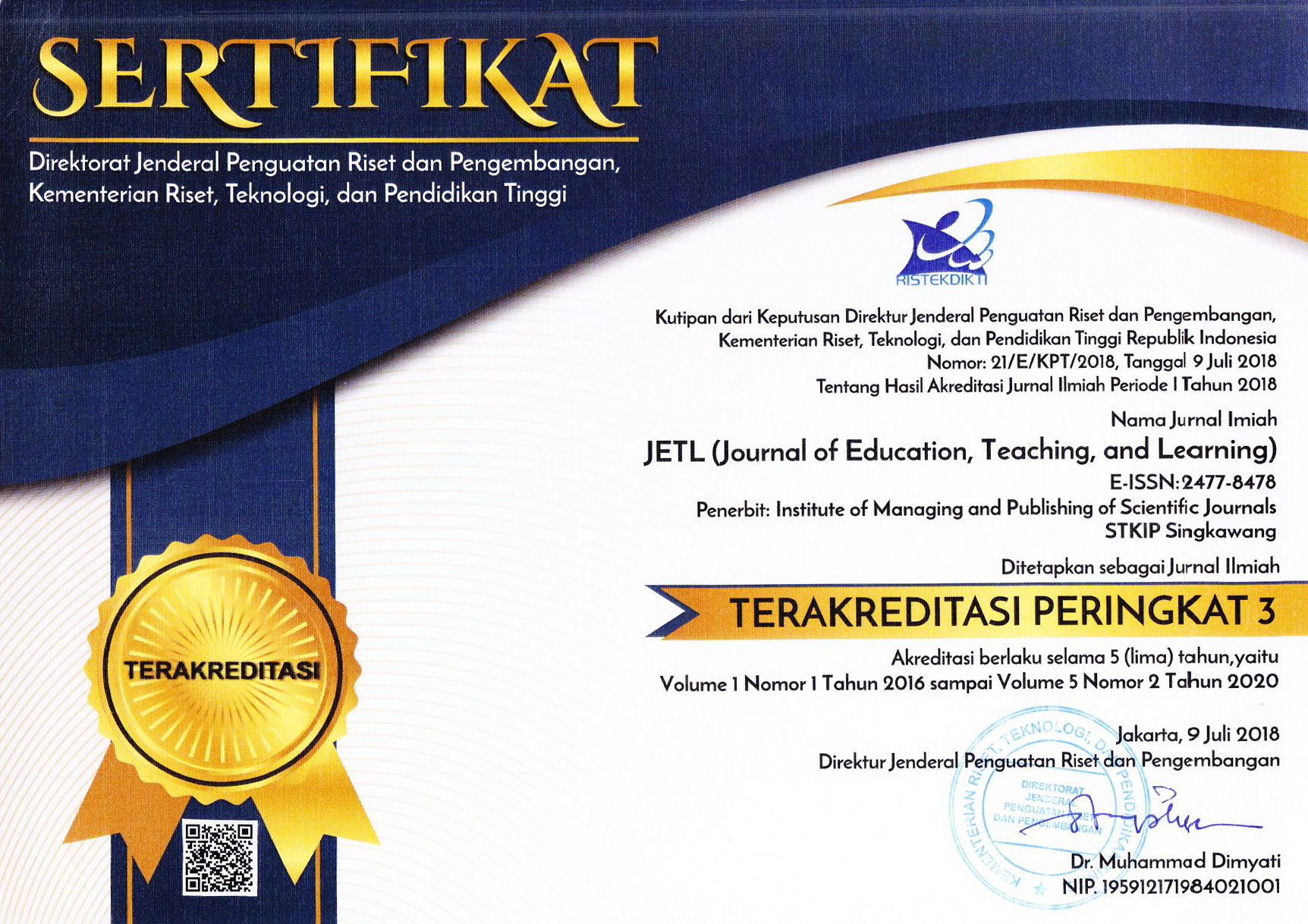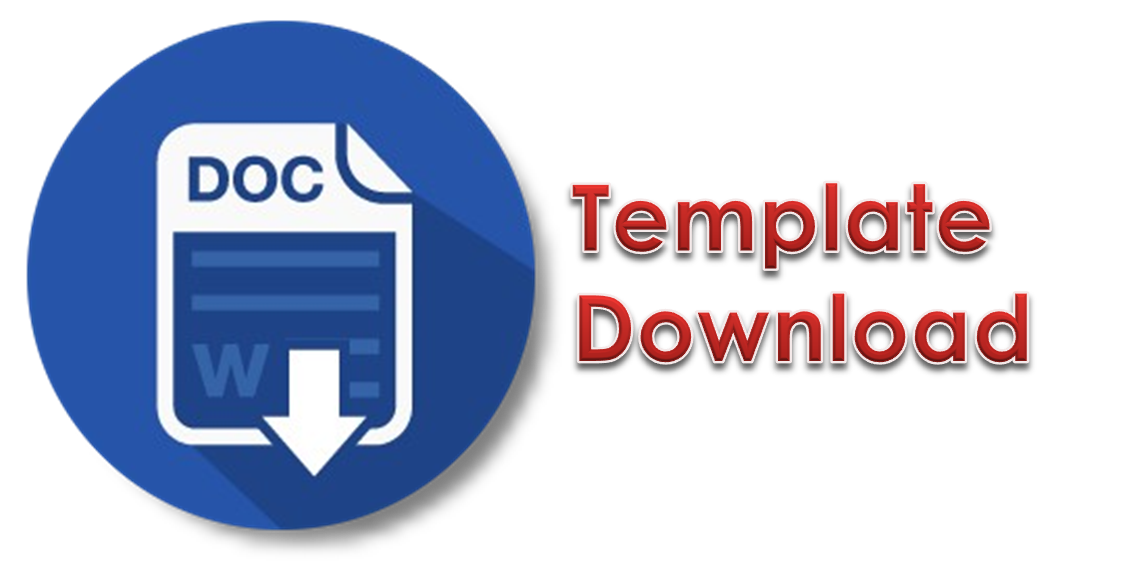Grade 10 English First Additional Language Learners’ Strategies For Past Tense Irregular Verb Inflection Mastery
Abstract
Abstract. The mastery of the irregular form of verbs in the past simple tense poses challenges to non-native learners of English all over the world. The objectives of this study were to identify the types of learners’ strategies useful for mastering the irregular verb inflection, to describe and evaluate them, and to establish why the English First Additional Language learners face difficulties in mastering those strategies. The study followed a quantitative research design. A questionnaire was used as an instrument for data collection from the respondents. Data were analysed using the Statistical Package for Social Sciences version 22 to ensure valid interpretations. Subsequent themes were placed in a table and a graph dealing with the inflection of irregular verbs. The target group of this study comprised 21 Grade 10 learners who were attending Dimani Secondary School in Limpopo Province, South Africa during the academic year 2021. From the data analysis, the initial study findings established that the respondents were incompetent in mastering the inflection of irregular verbs in the past simple tense when using the suppletion principle and the terminal consonants phoneme changes. The researchers used the grouping of common irregular verbs and the learning of irregular verbs in sentences strategies because learners were different and learned irregular verb inflection differently. Although it was previously found that learners could not understand the inflection of irregular verbs in the past simple tense, after having utilised these two strategies, the inflection of irregular verbs in the past simple tense improved with tremendous results.
Keywords: Inflection; irregular verbs; past simple tense; strategies
Full Text:
PDFReferences
Abuhamda, E., Bsharat, T. R. A. & Ismail, I. A. (2021). Understanding quantitative and qualitative research
methods: A theoretical perspective of young researchers. International Journal of Research, 8(2):71-87.
Aryal, S. (2019). Questionnaire method of data collection. Microbe Notes. Available online
at:https://microbenotes.com/questionnaire-method-of-data-collection/[Accessed on 18 August 2021].
Atlas Language School. (2020). MacMillan verb wheel game. Available from Espresso English. [Accessed: 29
May 2021].
Author. (2019).
Bala, K. E. I. (2017). Sampling and sampling methods. Biometrics & Biostatistics International Journal, 5(6):215-
Canale, M. & Swain, M. (1980). Theoretical bases of communicative approaches to second language teaching and
testing. In Allen, R. N., Spolsky, B. & H. G. Widdowson (Eds), Applied linguistics. London: British Council,
(1):1-47.
Chomsky, N. (1965). Aspects of the theory of syntax. Cambridge: The M. I. T. Press.
CreswelL, J. W. (2014). Research design: qualitative, quantitative, and mixed methods approach. Thousand Oaks:
SAGE Publications.
Deibler, S. (2012). Semantically implied irregular inflection. International Social Science Review, 87(1/2):35-46.
Denham, K. & Lobeck, A. (2013). Linguistics for everyone: An introduction. (rev. 2nd ed.). Boston: Cengage.
EngVid. (2021). Learn English for free. Common Irregular verbs (grouped). Available from www.engVid.com
[Accessed: 15 June 2021].
Gazu, K. (2020). English as second language students’ strategies when reading and writing about literary texts:
Some ethical considerations. Per Linguam, 36(2):16-27.
Helmie, J. & Hum, S. S. M. (2012). Internal change, suppletion and reduplication in English: A Study of
morphosemantic process. Journal of Aliena Bahasa, Santra, dan Pengajarannya, 1(2):97-200.
Idek, S. & Fong, L. L. (2015). The use of consciousness-raising techniques in teaching the verb ‘be’ to students
of vocational colleges. Procedia - Social and Behavioral Sciences, p. 208:111-121.
Lediga, M. & Ngoepe, I. J. (2020). Exploring the effective use of mobile devices by previously disadvantaged
English language student educators the constructivist way. Per Linguam, 36(2):104-125.
Majeed, M. N. (2018). Writing difficulties: An investigation of irregular morpheme errors among the students in
the South-Eastern University of Sri Lanka. International symposium, pp.953-963.
Mouri, C. (2020). Summarizing as a strategy to English grammar and writing skills: The case study of the First-
year LMD learners at the Algerian university Dr. Tahar Moulay-Saida. Arab World English Journal, 11(2):21.
Naser, M. (2017). The use of irregular cases by English language and literature students at the University of
Tabuk. British journal of sociology,16(2):103.
National Curriculum Statement Grades R-12. (2012). English First Additional Language Grades 10-12. Pretoria:
Department of Basic Education, pp.1-91.
Nordquis, T. R. (2017). Grammar in English definition and examples. Glossary of grammatical and rhetorical
terms. Available from http:/www.googlescholar.com [Accessed: 26 March 2021].
Odetallah, R. F. (2013). Teaching the regular and the irregular verbs through a cultural-based literary discourse in
an ESL grammar classroom. Arab World English Journal,4(2):122-136.
Patterson, K., Lambdon, R. M. A, Hoges, J. R. & Mcclellard, I. L. (2001). Deficits in irregular past-tense verb
morphology associated with degraded semantic knowledge. Neuropsychologia, 39:709-724.
Petty, R. E., Cacioppo, J. T., Strathman, A. J. & Priester, I. R. (2005). To think or not to think. Persuasion:
Psychological insights and perspectives, 81, p.116.
Rahmawati, U. (2019). An analysis of the difficulties faced by the students in learning simple past tense in the
eighth grade of SMP N 1 Baki in the academic year of 2018/2019. (Bachelor of Education dissertation).
Department of English Education. Indonesia: Muhammadiyah University of Surakarta.
Ramscar, M. (2002). The role of meaning in inflection: Why the past tense does not require a rule. Cognitive
Psychology, 45(1):45-94.
Rundell, M. (2014). Macmillan English Dictionary: The end of print? Slovenščina 2.0, 2 (2):1-14.
Rosydah, E. C. (2018). Improving student’s mastery of irregular verb by using memrise application at the tenth
grade of Man Sidoarjo. Perpustkaan, Surabaya Sunan Ampel State Islamic: Kentarian Agama Universitas Islam
Negeri.
Tatik Sutarti, T. (2017). Efforts to Increase Students Reading Interest on Educational Reference Through Classical
Guidance and Counseling Experiential Learning Model. Journal of Education, Teaching and Learning, 2(1): 59-
, p-ISSN: 2477-5924 e-ISSN: 2477-4878.
Zaia, S. (2015). Regular and irregular verbs. Graduate writing lab. Yale Center for Teaching and Learning.
Available from https://poorvucenter.yale.edu/sites/default/files/.../regular_and_irreg ular_verbs1. pdf
[Accessed:16 March 2021].
DOI: http://dx.doi.org/10.26737/jetl.v6i2.2654
Refbacks
- There are currently no refbacks.

This work is licensed under a Creative Commons Attribution-NonCommercial 4.0 International License.
Published by:
Institute of Managing and Publishing of Scientific Journals STKIP Singkawang
Sekolah Tinggi Keguruan dan Ilmu Pendidikan (STKIP) Singkawang
Address : STKIP Singkawang, Jalan STKIP - Kelurahan Naram Singkawang, Kalimantan Barat, INDONESIA, 79251
No. Telp. : +62562 420 0344
No. Fax. : +62562 420 0584
JETL (Journal of Education, Teaching, and Learning)
e-ISSN : 2477-8478
p-ISSN : 2477-5924

Editor in Chief Contact: [email protected] / Wa: +6282142072788
Publisher Contact: [email protected] / Wa: +6282142072788
Management Tools
JETL Indexed by:
JETL (Journal of Education, Teaching, and Learning) is licensed under a Creative Commons Attribution-NonCommercial 4.0 International License.











